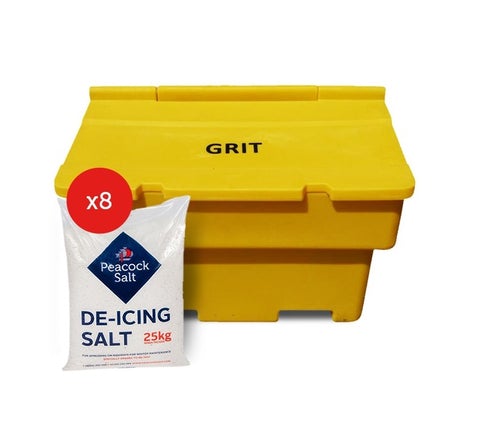Winter is here. Are you ready for it? Ensuring that the school you are responsible for is a safe place for kids and staff in the oncoming cold, rain, snow and ice is essential. Here’s a checklist of the things you need to have sorted.
Heating
Make sure that the school heating system is working properly and keeping the classrooms and corridors at an appropriate temperature. It is important to fix anything before the worst winter weather hits, as you do not want to close a room for a faulty heater – or the whole school because of the boiler. Check for anything broken or leaking.
Grit and salt bins
Make sure to equip the outside grounds of the school with grit and salt bins. Ice can be a danger to people of all ages. Having a grit/salt bin ready stocked with grit or salt means you will have it to hand when snow and ice are forecast.
Since grit and salt have a long lifespan and don’t lose their effectiveness, you can stock them well in advance. This will give you time to deal with more time-sensitive matters without worrying that icy grounds will catch you unprepared.
Check your forecast regularly and if snow and ice is expected you can spread the grit and salt preventively – don’t wait until everything is already buried in snow and ice. This will minimise the risk of slipping dangers.
Grit and salt can easily be spread around the grounds using a grit spreader. Grit spreaders are essentially baskets on wheels that disperse grit or salt evenly. You can find ones that are manually pushed or those that can be towed by vehicles. For most school grounds a manual one may be the best choice.
Mats
Most school floors have hard surfaces that can be slippery when wet. An easy way to reduce this risk and create a cleaner environment is to put mats at entrances and wherever appropriate around the building.
Entrance mats
There are many mats that will fit this purpose. There are a few things to look for when choosing mats for the school. The first one is grip. The mat must be able to stay in place by itself, unless you are fitting it into a matwell, which will do the job for you. The second thing to look for is if it can withstand heavy footfall. For the rainy and snowy months you will need high moisture absorbency as well.
Suitable materials include microfibre, rubber and coir, which are all durable and great at catching dirt and debris from shoes. Microfibre and coir mats also have high moisture absorbency.
Outside mats
You can also consider using anti-slip mats to make a path from the school gates to the building’s entrance to prevent any falls. You can place them anywhere else you see fit, depending on how your grounds are organised.
Plans for emergencies
Just as you have plans in case of fire or other safety threats to the school, it is good to have a well thought-out plan for winter emergencies. Be ready with phone numbers you may need to call, stock the nurse’s office with first aid supplies that may be needed during winter and any other emergencies that you can think of. It is sensible to be well prepared.
